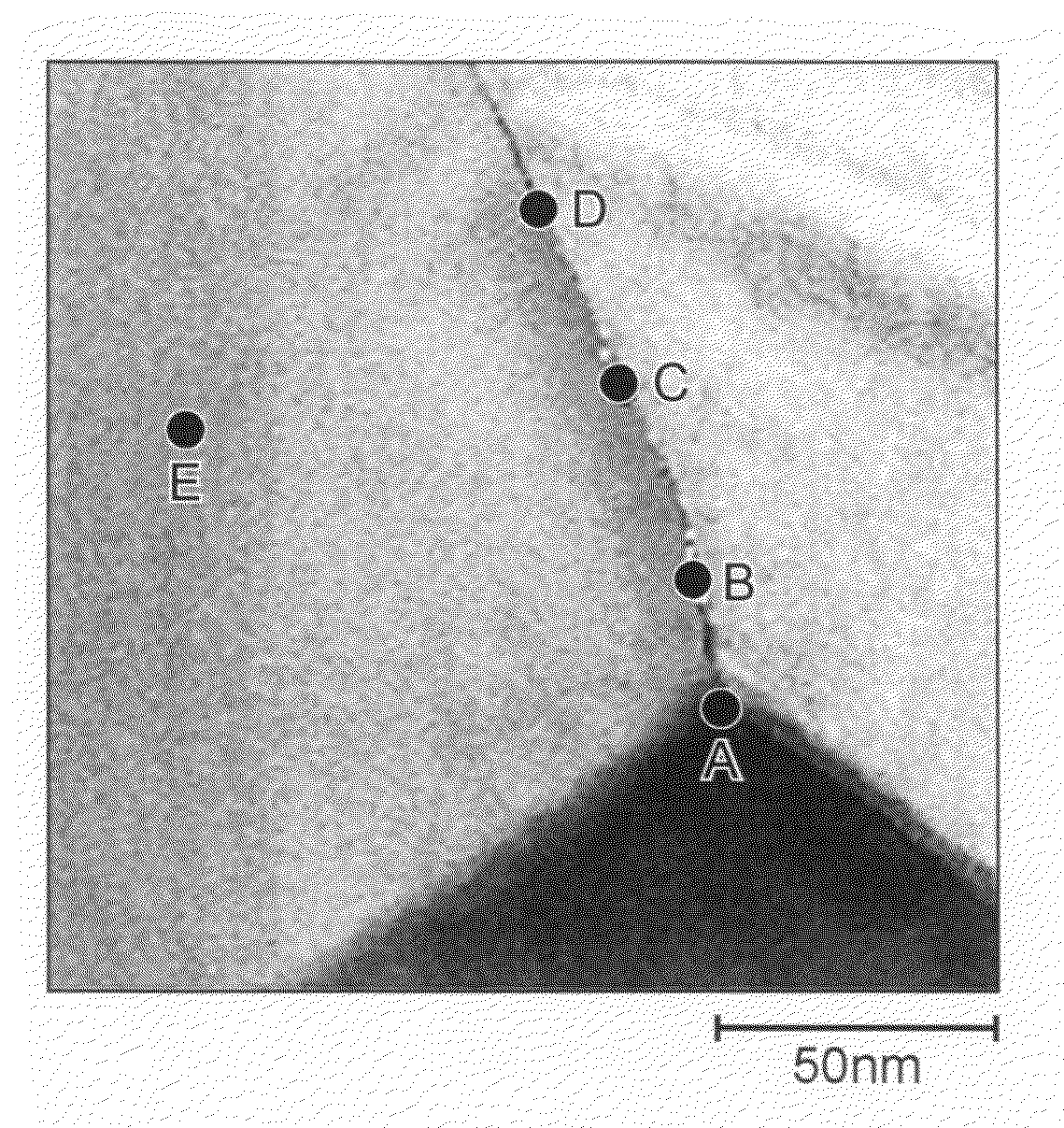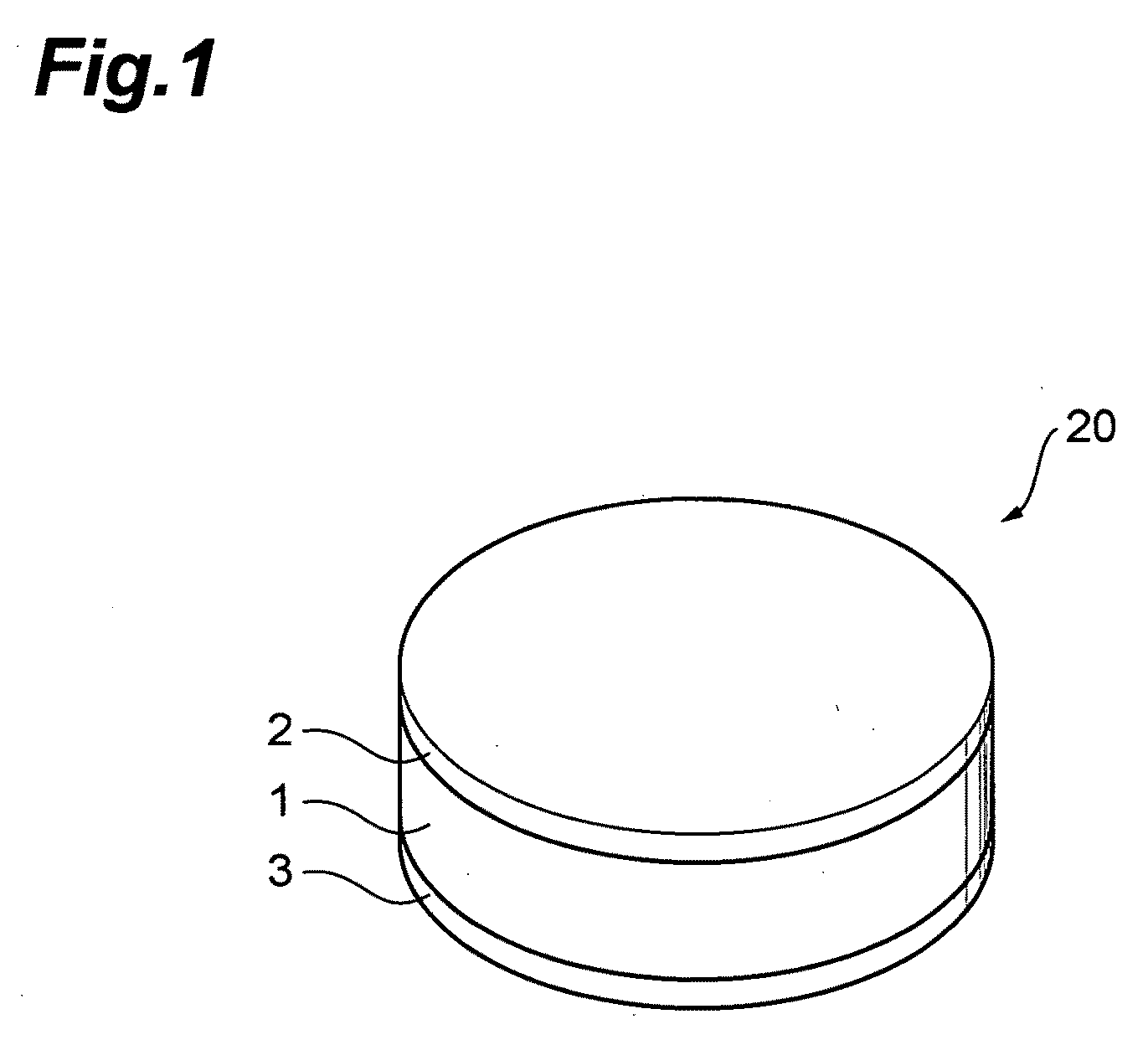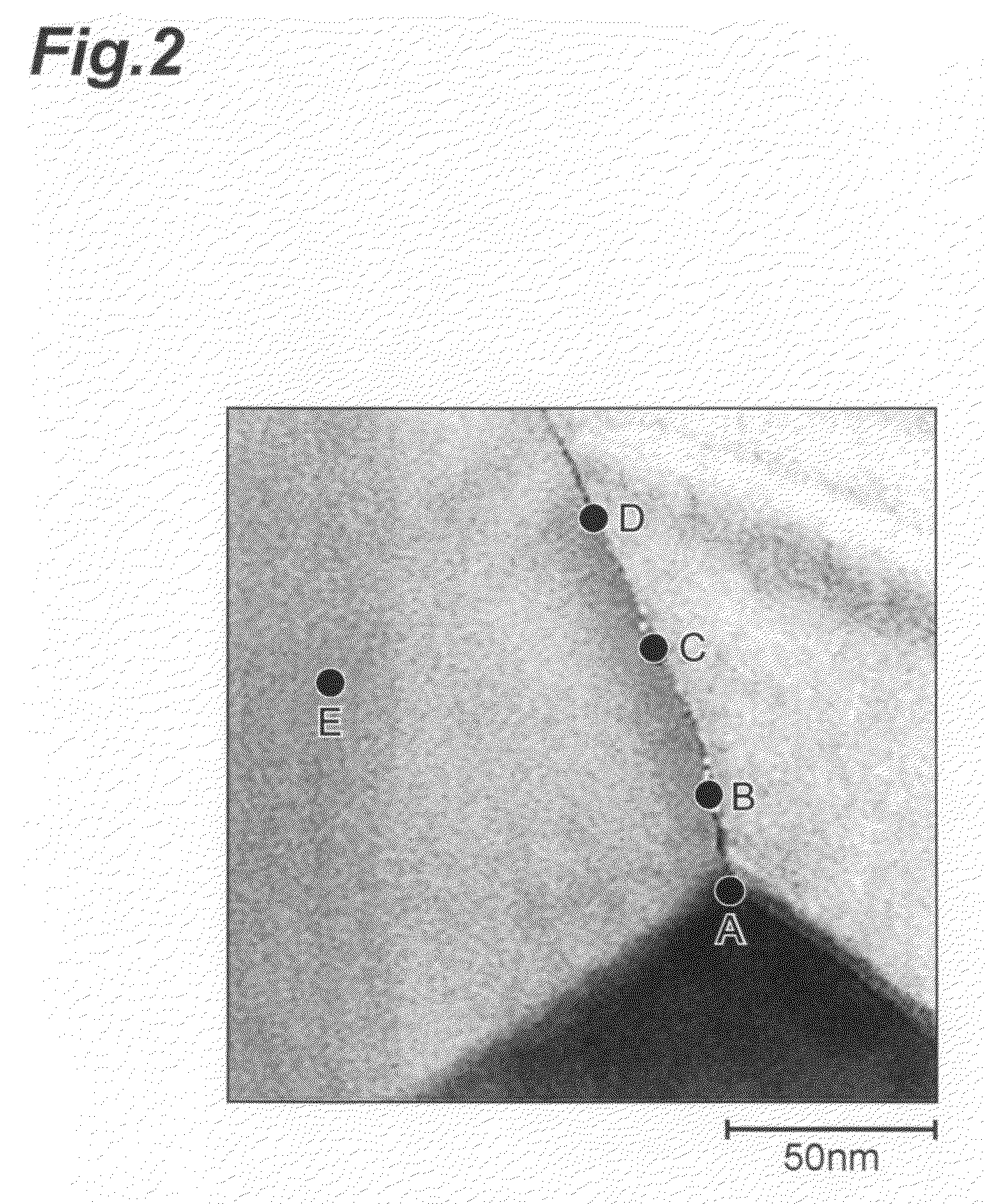Piezoelectric ceramic and piezoelectric element employing it
a piezoelectric element and piezoelectric ceramic technology, applied in the field of piezoelectric ceramic and piezoelectric element employing it, can solve the problems of low piezoelectric characteristics, inability to provide sufficient generated displacement, and difficulty in maintaining and adjusting the composition of the obtained piezoelectric ceramic, and achieve excellent piezoelectric characteristics and reduce lead conten
- Summary
- Abstract
- Description
- Claims
- Application Information
AI Technical Summary
Benefits of technology
Problems solved by technology
Method used
Image
Examples
example 1
Fabrication of Piezoelectric Element
[0095]A piezoelectric element 20 such as shown in FIG. 1 was fabricated by the following procedure. First, sodium carbonate (Na2CO3) powder, potassium carbonate (K2CO3) powder, lithium carbonate (Li2CO3) powder, niobium oxide (Nb2O5) powder, tantalum oxide (Ta2O5) powder, strontium carbonate (SrCO3) powder, zirconium oxide (ZrO2) powder and barium carbonate (BaCO3) powder were prepared. Manganese carbonate (MnCO3) powder was also prepared as the starting material for the accessory component. After thoroughly drying the starting materials, they were weighed out so that the composition (molar ratio) of the complex oxide as the major component of the piezoelectric ceramic conformed to the following formula (9).
0.945(Na0.57K0.38Li0.05)(Nb0.9Ta0.1)O3+0.05SrZrO3+0.005Ba(Nb0.9Ta0.1)2O6 (9)
[0096]The MnCO3 powder was also weighed out to 0.5 mass % in terms of MnO, based on the total complex oxide composition of formula (9) above.
[0097]The strontium carbon...
examples 2-4
[0109]Piezoelectric elements were fabricated and their piezoelectric characteristics evaluated in the same manner as Example 1, except that the MnCO3 powder was added in an amount so that the mass ratio in terms of MnO with respect to the total complex oxide composition of formula (9) above was as listed in Table 1. The evaluation results are shown in Table 1.
example 5
Fabrication of Piezoelectric Element
[0110]A piezoelectric element was fabricated in the same manner as Example 1, except that Cu2O powder was prepared instead of MnCO3 powder, and the Cu2O powder was mixed so that the mass ratio with respect to the total complex oxide composition of formula (9) above was 1.0 mass % in terms of CuO.
[0111]{Observation of Microstructure and Compositional Analysis}
[0112]Observation of the microstructure and compositional analysis of the obtained piezoelectric ceramic were accomplished using an STEM-EDS, in the same manner as Example 1. FIG. 4 is a STEM (Scanning Transmission Electron Microscope) photograph showing the microstructure of the piezoelectric ceramic of Example 5. FIG. 9 is a STEM (Scanning Transmission Electron Microscope) photograph showing an enlarged view of the area near a grain boundary of the piezoelectric ceramic shown in FIG. 4.
[0113]FIG. 10 is a chart showing the results of analysis of different points of the piezoelectric ceramic o...
PUM
| Property | Measurement | Unit |
|---|---|---|
| Curie temperatures | aaaaa | aaaaa |
| Curie temperature | aaaaa | aaaaa |
| Curie temperature | aaaaa | aaaaa |
Abstract
Description
Claims
Application Information
 Login to View More
Login to View More - R&D
- Intellectual Property
- Life Sciences
- Materials
- Tech Scout
- Unparalleled Data Quality
- Higher Quality Content
- 60% Fewer Hallucinations
Browse by: Latest US Patents, China's latest patents, Technical Efficacy Thesaurus, Application Domain, Technology Topic, Popular Technical Reports.
© 2025 PatSnap. All rights reserved.Legal|Privacy policy|Modern Slavery Act Transparency Statement|Sitemap|About US| Contact US: help@patsnap.com



